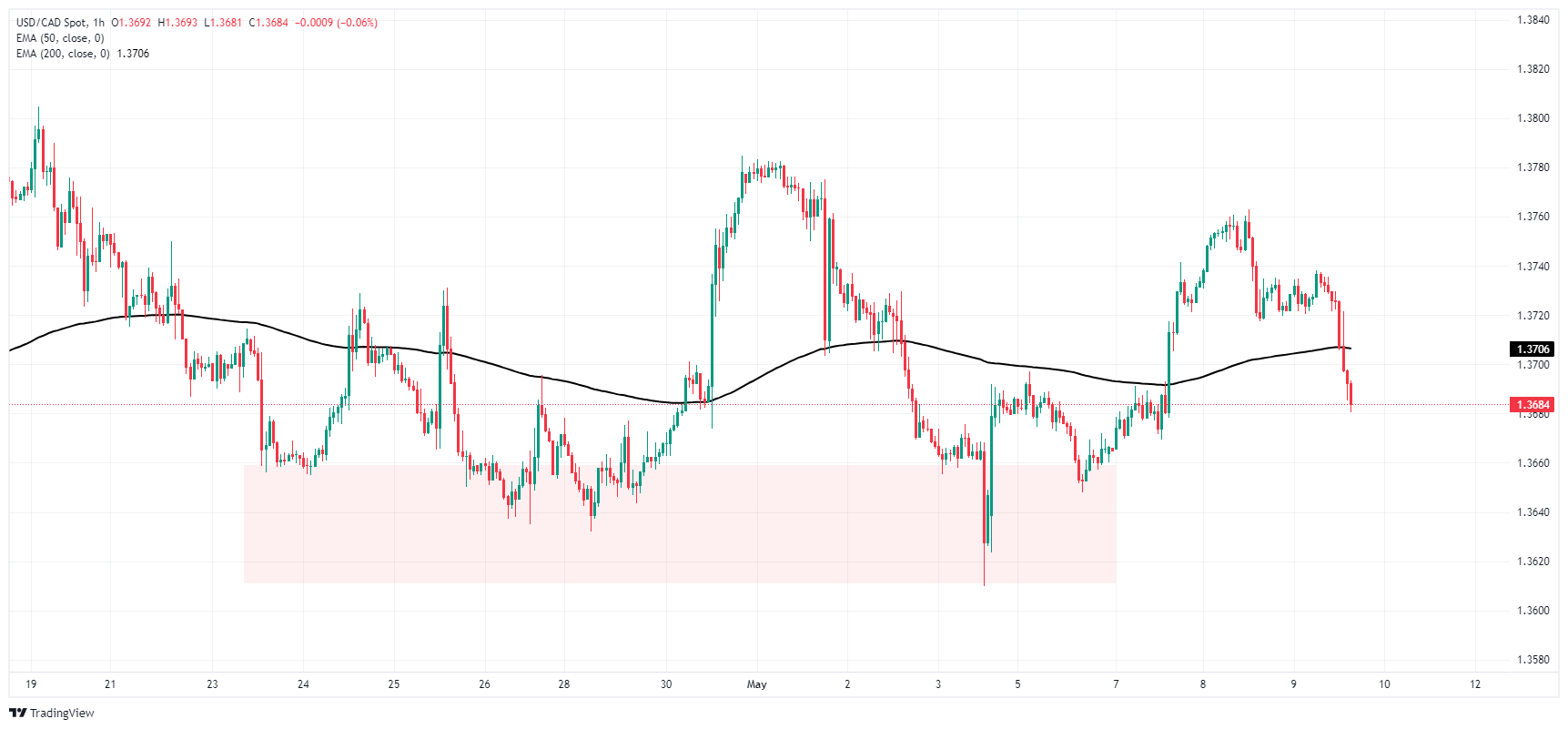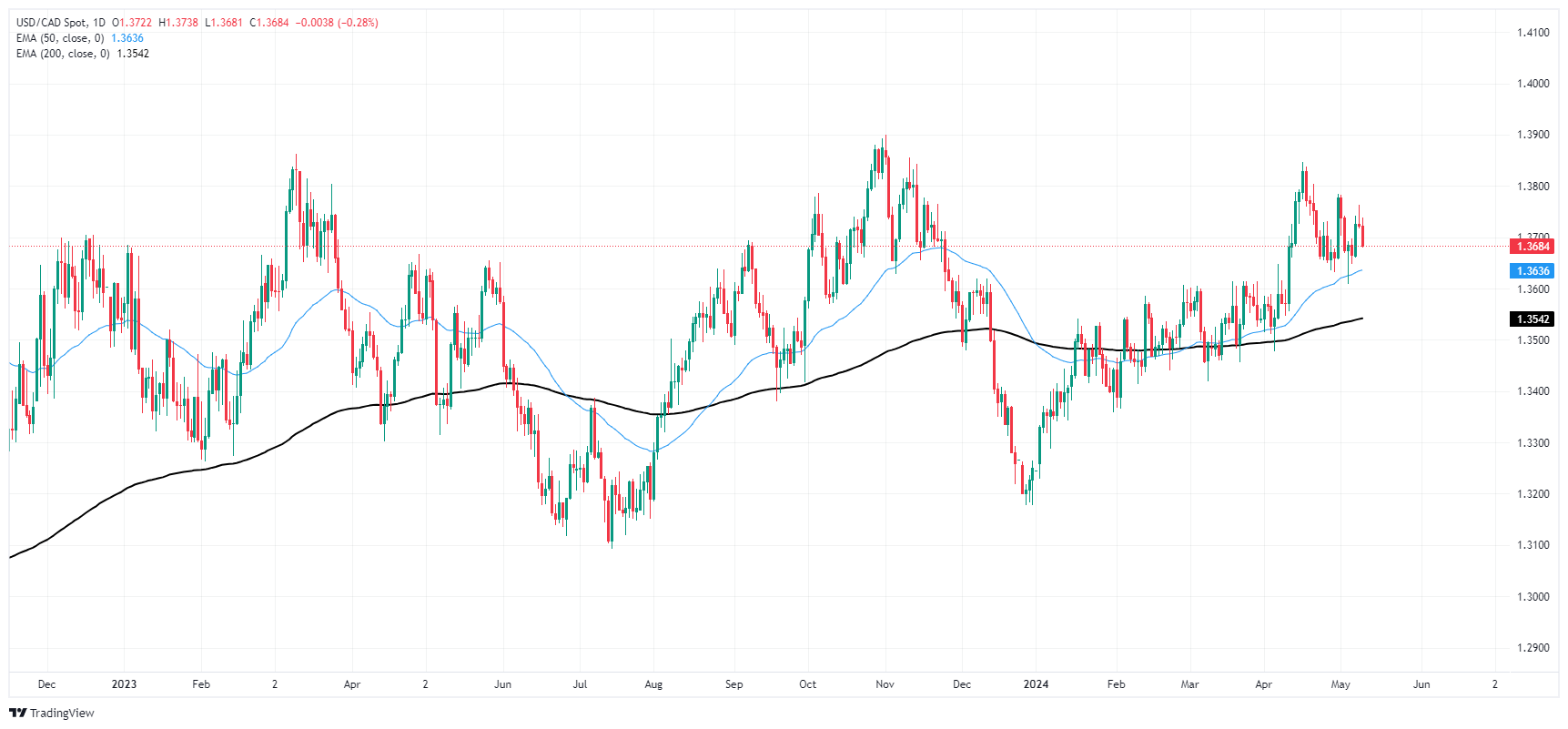Canadian Dollar gains ground as Greenback recedes on Thursday
- Canadian Dollar propped up by broad-market, risk-on sentiment.
- Canada has a resilient financial system, says BoC Macklem.
- Canadian labor numbers slated to print on Friday.
The Canadian Dollar (CAD) found some bids on Thursday after investors’ risk-appetite stepped up, bolstering markets out of safe-havens like the US Dollar (USD). The Greenback is broadly softer on the day, and CAD traders are finding fresh buying momentum.
The Bank of Canada (BoC) delivered its latest Financial System Review during Thursday’s American market session. BoC Governor Tiff Macklem assured market participants that the Canadian financial system remains “resilient” overall, the BoC head noted that signs of stress are increasing. BoC Deputy Governor Carolyn Rogers also noted that while the number of small businesses reporting insolvencies has increased, the BoC doesn’t see this having broader implications for the Canadian economy.
Daily digest market movers: Canadian Dollar climbs again as BoC talks down risks
- BoC Gov Macklem:
- Canadian financial system remains resilient.
- Market expectations about timing of rate cuts could introduce volatility.
- Financial institutions adjusting to higher rates presents a risk to financial stability.
- Indicators of financial stress have risen.
- BoC Deputy Gov Rogers:
- The number of smaller firms filing for insolvency have increased, but could just mean normalization after years of below-average filings.
- Crude Oil markets remain tepid, crimping upside potential in CAD.
- Friday will close out the trading week with Canadian labor figures.
- The Canadian Unemployment Rate is expected to tick higher to 6.2% from 6.1%.
- April’s Canadian Net Change in Employment is expected to show a net increase of 18K new jobs additions, up from the previous month’s -2.2K decline.
Canadian Dollar price today
The table below shows the percentage change of Canadian Dollar (CAD) against listed major currencies today. Canadian Dollar was the strongest against the Japanese Yen.
| USD | EUR | GBP | CAD | AUD | JPY | NZD | CHF | |
| USD | -0.22% | -0.07% | -0.24% | -0.39% | 0.19% | -0.22% | -0.06% | |
| EUR | 0.22% | 0.15% | -0.02% | -0.16% | 0.37% | 0.00% | 0.16% | |
| GBP | 0.06% | -0.15% | -0.16% | -0.31% | 0.22% | -0.14% | 0.01% | |
| CAD | 0.25% | 0.04% | 0.19% | -0.14% | 0.43% | 0.04% | 0.19% | |
| AUD | 0.39% | 0.15% | 0.31% | 0.13% | 0.52% | 0.16% | 0.30% | |
| JPY | -0.20% | -0.37% | -0.21% | -0.39% | -0.51% | -0.34% | -0.22% | |
| NZD | 0.21% | 0.00% | 0.15% | -0.04% | -0.18% | 0.39% | 0.14% | |
| CHF | 0.08% | -0.14% | 0.01% | -0.17% | -0.31% | 0.22% | -0.14% |
The heat map shows percentage changes of major currencies against each other. The base currency is picked from the left column, while the quote currency is picked from the top row. For example, if you pick the Euro from the left column and move along the horizontal line to the Japanese Yen, the percentage change displayed in the box will represent EUR (base)/JPY (quote).
Technical analysis: Canadian Dollar claws back further ground from receding Greenback
The Canadian Dollar is broadly higher on Thursday, extending a rebound that started midweek. The Canadian Dollar is up around a third of a percent against the US Dollar, and climbed four-tenths of a percent against the Japanese Yen (JPY).
USD/CAD was dragged lower on the day, falling back below the 200-hour Exponential Moving Average (EMA) at 1.3708, and is approaching a near-term supply zone between 1.3660 and 1.3610. This week’s bullish swing fumbled from 1.3760, and swing highs are having a difficult time establishing footholds.
Daily candlesticks continue to trade north of 1.3650 as the pair finds support from the 50-day EMA at 1.3636. Despite a near-term bearish tilt pulling the pair down from the last swing high into 1.3850, the pair is still up on the year, trading up 3.3% from 2024’s opening bids of 1.3246.
USD/CAD hourly chart
USD/CAD daily chart
Canadian Dollar FAQs
The key factors driving the Canadian Dollar (CAD) are the level of interest rates set by the Bank of Canada (BoC), the price of Oil, Canada’s largest export, the health of its economy, inflation and the Trade Balance, which is the difference between the value of Canada’s exports versus its imports. Other factors include market sentiment – whether investors are taking on more risky assets (risk-on) or seeking safe-havens (risk-off) – with risk-on being CAD-positive. As its largest trading partner, the health of the US economy is also a key factor influencing the Canadian Dollar.
The Bank of Canada (BoC) has a significant influence on the Canadian Dollar by setting the level of interest rates that banks can lend to one another. This influences the level of interest rates for everyone. The main goal of the BoC is to maintain inflation at 1-3% by adjusting interest rates up or down. Relatively higher interest rates tend to be positive for the CAD. The Bank of Canada can also use quantitative easing and tightening to influence credit conditions, with the former CAD-negative and the latter CAD-positive.
The price of Oil is a key factor impacting the value of the Canadian Dollar. Petroleum is Canada’s biggest export, so Oil price tends to have an immediate impact on the CAD value. Generally, if Oil price rises CAD also goes up, as aggregate demand for the currency increases. The opposite is the case if the price of Oil falls. Higher Oil prices also tend to result in a greater likelihood of a positive Trade Balance, which is also supportive of the CAD.
While inflation had always traditionally been thought of as a negative factor for a currency since it lowers the value of money, the opposite has actually been the case in modern times with the relaxation of cross-border capital controls. Higher inflation tends to lead central banks to put up interest rates which attracts more capital inflows from global investors seeking a lucrative place to keep their money. This increases demand for the local currency, which in Canada’s case is the Canadian Dollar.
Macroeconomic data releases gauge the health of the economy and can have an impact on the Canadian Dollar. Indicators such as GDP, Manufacturing and Services PMIs, employment, and consumer sentiment surveys can all influence the direction of the CAD. A strong economy is good for the Canadian Dollar. Not only does it attract more foreign investment but it may encourage the Bank of Canada to put up interest rates, leading to a stronger currency. If economic data is weak, however, the CAD is likely to fall.

